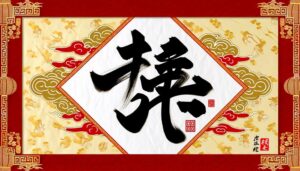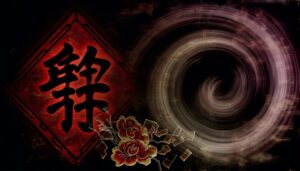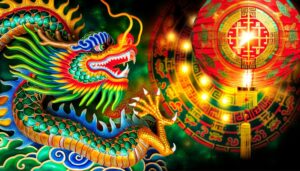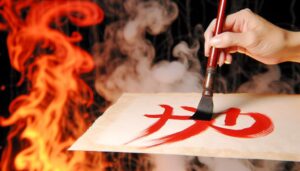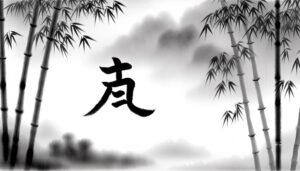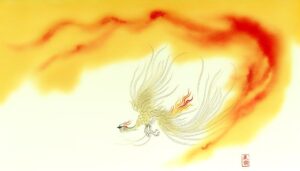What Is the Chinese Symbol for Life?
The symbol of life in Chinese culture is eloquently expressed through the character '生' (shēng). This character transcends mere biological existence, encompassing ideals of growth, vitality, and ethical living.
Rooted in ancient philosophies such as Confucianism and Taoism, '生' embodies the natural order and cyclical patterns of life. Cultural artifacts, literature, and daily practices in Chinese society reflect this profound symbol.
'生' captures the essence of vibrancy and moral cultivation, resonating deeply within the rich tapestry of Chinese traditions. To comprehend its multifaceted significance, further exploration into its philosophical and historical context is necessary.

Key Takeaways
- The Chinese character '生' (Shēng) represents life, growth, and existence.
- '生' transcends biological life, symbolizing moral integrity, self-cultivation, and natural order.
- The character '生' is central to rituals, literature, and everyday expressions in Chinese culture.
- It is influenced by Confucianism, Taoism, and Buddhism, embodying the essence of life.
- '生' is integrated into modern contexts, reflecting personal and cultural identity.
Historical Roots
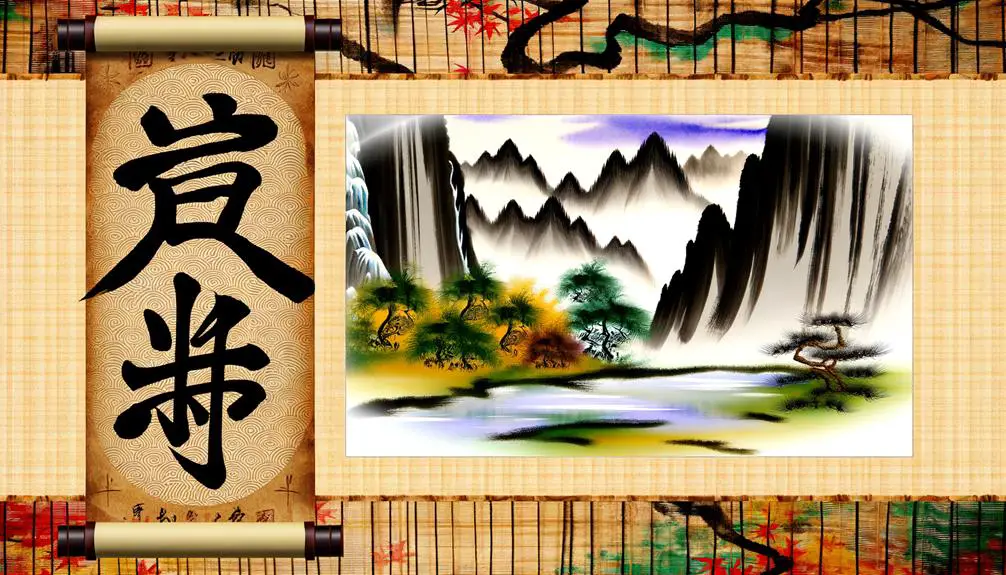
The historical roots of the symbol of life in Chinese culture can be traced back to ancient philosophical texts and traditional religious beliefs. Central to these roots are Confucianism, Taoism, and Buddhism, which have profoundly influenced Chinese thought and symbolism.
Confucian texts emphasize the importance of human life and moral integrity, while Taoist scriptures highlight the natural flow of life, known as 'Qi' (氣), which is the life force permeating the universe. Buddhist teachings introduced the concept of the cyclical nature of life and rebirth.
These philosophies collectively shaped a rich tapestry of symbols and meanings associated with life, reflecting the deep interconnection between humanity, nature, and the cosmos in Chinese culture.
Ancient Symbolism
Rooted in millennia of tradition, ancient Chinese symbolism for life is deeply embedded in characters, myths, and artistic representations that convey profound philosophical and spiritual meanings. These symbols are more than mere decorative elements; they are carriers of deep cultural values and beliefs.
The Dragon symbolizes power, strength, and good fortune.
The Phoenix represents rebirth, immortality, and renewal.
The Yin-Yang embodies balance and harmony in the universe.
The Bagua consists of eight trigrams used in Taoist cosmology to represent fundamental principles of reality.
The Crane is a symbol of longevity and wisdom.
Each of these symbols serves as a reflection of the rich tapestry of Chinese thought, showcasing an intricate blend of mythology, cosmology, and artistic expression.
Philosophical Meanings

The philosophical framework underpinning the Chinese symbol of life is deeply rooted in the concepts of Yin and Yang, which signify the interdependence of opposites and the dynamic equilibrium within the universe.
This duality emphasizes harmony and balance as essential elements in the continuous flow of life. Understanding these principles offers profound insights into the Chinese worldview, where life's essence is perceived as an intricate interplay of forces that must be maintained in equilibrium.
Yin and Yang
Yin and Yang, integral to Chinese cosmology, symbolize the dualistic nature of existence, manifesting as interconnected and interdependent forces within the universe. These two primal elements represent opposing yet complementary qualities, whose dynamic interaction shapes the natural world and human experience.
- Yin: embodies qualities such as darkness, passivity, and femininity.
- Yang: symbolizes light, activity, and masculinity.
- Mutual Dependence: Neither force exists in isolation; each is necessary for the other's existence.
- Transformation: Both forces are in a constant state of flux, influencing and transforming one another.
- Symbolism: The iconic Taijitu symbol visually encapsulates their harmonious interplay.
Understanding Yin and Yang offers profound insights into the fundamental principles that govern life's myriad phenomena.
Harmony and Balance
In Chinese philosophy, the concept of harmony and balance is central to understanding the interrelationship between all elements of existence. It is epitomized in the principle of Yin and Yang, where opposite forces are interconnected and interdependent.
This balance is not static but dynamic, necessitating continuous adjustment to maintain equilibrium. Harmony (和, hú) is a revered ideal, reflecting not only physical but also social and spiritual dimensions. It fosters a state of natural order and ideal living, aligning personal actions with universal laws.
The pursuit of balance promotes well-being and mitigates conflict, embodying wisdom in governance, relationships, and personal health. Therefore, harmony and balance serve as foundational pillars in the Chinese worldview, guiding ethical and practical life decisions.
Iconic Characters
Among the myriad of characters in the Chinese script, the symbol for life, or '生' (shēng), stands out as one of the most iconic and deeply significant. This character is not merely a linguistic element but a rich cultural artifact that embodies various dimensions of existence.
Here are some key aspects that highlight its prominence:
- Etymology: Rooted in ancient pictographs symbolizing growth and birth.
- Usage: Found in numerous compound words signifying life, growth, and vitality.
- Calligraphy: Frequently featured in traditional Chinese calligraphy and art.
- Philosophical Context: Integral to concepts in Confucianism, Taoism, and Buddhism.
- Modern Relevance: Continues to be a symbol of prosperity and longevity in contemporary Chinese society.
These facets collectively underscore the profound impact of '生' in the Chinese cultural lexicon.
Cultural Significance
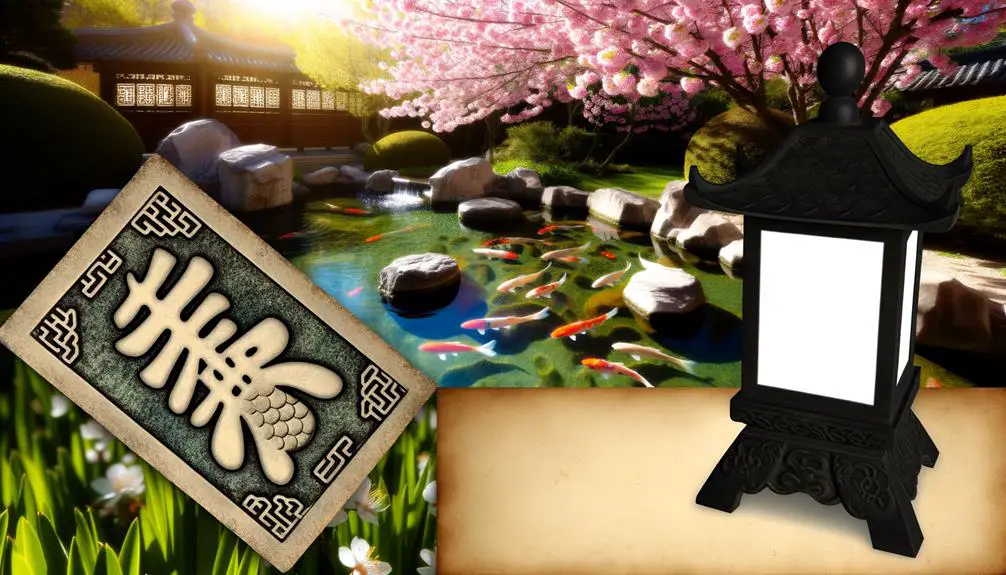
Embodying profound philosophical and historical connotations, the character '生' (shēng) holds a crucial place in Chinese culture, symbolizing the essence of life and existence.
'生' transcends mere biological life, encompassing notions of birth, vibrancy, and continuous growth. Rooted in Daoist and Confucian thought, it reflects the harmony between humanity and nature, underscoring the cyclical nature of existence.
In Confucianism, '生' represents moral life and self-cultivation, advocating for the flourishing of human potential. Daoism views '生' as a manifestation of the natural order, emphasizing living in accordance with the Dao.
Across Chinese history, '生' has been integral to rituals, literature, and everyday expressions, perpetuating its significance in shaping cultural identity and philosophical outlook.
Artistic Representations
Artistic representations of the Chinese symbol for life encompass a rich tapestry of traditional calligraphy and contemporary art forms. Traditional calligraphy styles, with their emphasis on brush technique and historical conventions, offer a profound connection to cultural heritage.
In contrast, modern art interpretations reimagine the symbol through diverse mediums, reflecting both individual creativity and evolving societal values.
Traditional Calligraphy Styles
The intricate beauty of traditional Chinese calligraphy styles lies in their ability to convey profound meanings and cultural significance through masterful brush strokes and artistic flourishes. Each stroke embodies a rich heritage, reflecting centuries of philosophical and artistic evolution.
Chinese calligraphy is categorized into several distinctive styles, each with unique characteristics and historical contexts:
- Seal Script (篆书): An ancient form known for its intricate patterns and formality.
- Clerical Script (隶书): Recognized for its straight lines and broad, flat strokes.
- Regular Script (楷书): The most standardized style, ensuring clarity and legibility.
- Running Script (行书): Balances between formality and fluidity, often used for personal letters.
- Cursive Script (草书): Highly expressive and abstract, emphasizing speed and emotion.
These styles collectively encapsulate the essence of Chinese cultural artistry.
Modern Art Interpretations
Building upon the rich heritage of traditional calligraphy, modern art interpretations of the Chinese symbol for life seamlessly blend classical elements with contemporary artistic innovations. These creations reflect a dynamic interplay between historical reverence and forward-looking creativity, resulting in pieces that resonate across cultural and temporal boundaries.
| Art Style | Medium | Notable Artist |
|---|---|---|
| Abstract | Mixed Media | Xu Bing |
| Minimalist | Ink on Canvas | Ai Weiwei |
| Digital Art | Digital Platforms | Yang Yongliang |
| Graffiti | Urban Spaces | Zhang Dali |
| Sculptural | Metal and Wood | Cai Guo-Qiang |
Such interpretations not only preserve the essence of the symbol but also invite new dialogues and perspectives, enriching its significance in the modern era.
Modern Interpretations

Contemporary Chinese culture continues to imbue traditional symbols of life with evolving meanings that reflect modern societal values and technological advancements. Modern interpretations of these symbols are influenced by a myriad of factors, including globalization and digitalization. This intersection of tradition and modernity results in rich, multifaceted representations that resonate with contemporary audiences.
Integration with technology: Symbols are now often digitized and used in apps and social media.
Global cultural exchange: Traditional symbols are adapted in global contexts, fostering cross-cultural understanding.
Environmental consciousness: Symbols related to nature are reinterpreted to emphasize sustainability.
Personal expression: Individuals use traditional symbols in tattoos and fashion to express identity.
Corporate branding: Businesses incorporate these symbols to convey heritage and authenticity.
These dynamics ensure that traditional symbols remain relevant and vibrant in contemporary Chinese society.
Symbol in Daily Life
In daily life, Chinese symbols of life are seamlessly integrated into various aspects of routine activities, reflecting both cultural heritage and modern adaptations. These symbols are omnipresent in daily interactions, from calligraphy art adorning homes to motifs in clothing and accessories. They are also prevalent in festivals, where traditional symbols are used to convey wishes of longevity, prosperity, and health. Below is a table illustrating their integration:
| Aspect | Example Symbol | Meaning |
|---|---|---|
| Home Decor | 福 (Fú) | Good Fortune |
| Clothing & Accessories | 龙 (Lóng) | Power and Strength |
| Festivals | 寿 (Shòu) | Longevity |
| Daily Communication | 心 (Xīn) | Heart, Compassion |
These symbols not only enrich daily life but also perpetuate a profound cultural legacy.
Global Influence
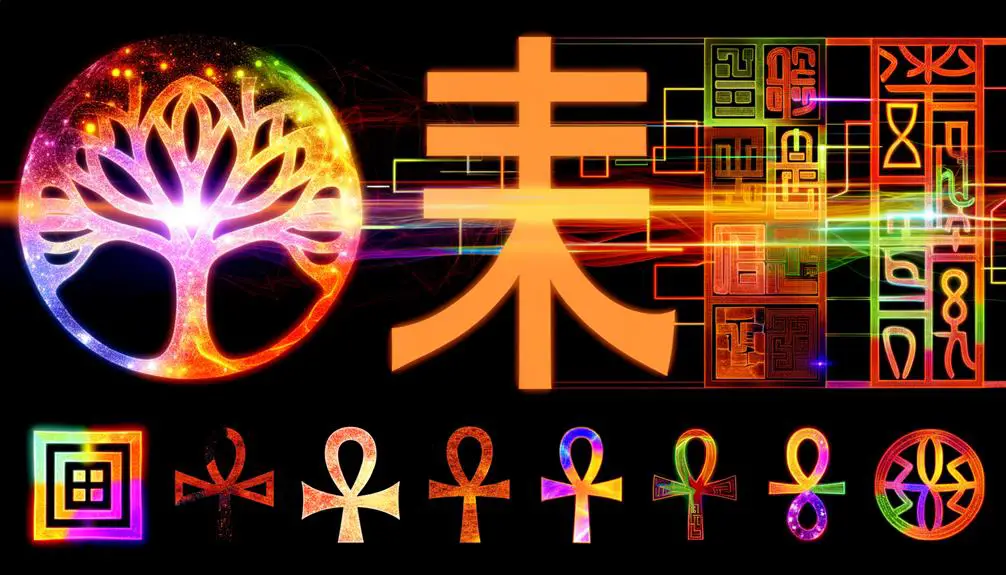
The pervasive presence of Chinese symbols in daily life extends beyond national borders, influencing cultures globally through their adoption in art, fashion, and spiritual practices. These ancient symbols resonate with universal themes of life, harmony, and prosperity, transcending linguistic and cultural barriers.
- Art: Chinese characters and motifs feature prominently in global contemporary art, often symbolizing deeper philosophical meanings.
- Fashion: International designers incorporate Chinese symbols into their collections, merging tradition with modernity.
- Spiritual Practices: Practices like Feng Shui and Tai Chi integrate Chinese symbols to promote balance and well-being.
- Urban Design: Cities worldwide adopt Chinese architectural elements, emphasizing longevity and harmony.
- Education: Chinese symbols are studied for their linguistic beauty and cultural significance in universities worldwide.
These elements showcase the profound global influence of Chinese symbols.
Conclusion
The symbol of life in Chinese culture is deeply rooted in history and holds rich philosophical meanings. It serves as a linchpin connecting past and present, tradition and modernity.
Like a timeless river flowing through the annals of history, it carries with it the essence of existence, cultural values, and artistic expressions.
The pervasive influence of this symbol underscores its enduring significance, shaping both individual lives and collective identities within and beyond Chinese society.

